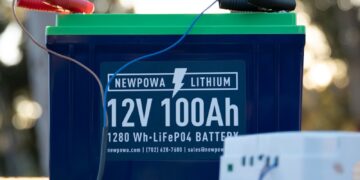Why Smart Energy Infrastructure is the Only Way Forward
By EcoBusinessNews Editors
Published July 21, 2025
The Clean Energy Boom Meets the Grid Wall
Across the U.S., thousands of renewable energy projects—from solar farms to grid-scale battery installations—are ready to launch. The technology is proven, the capital is lined up…
But there’s one problem.
They can’t plug in.
The U.S. energy grid is overloaded, outdated, and underprepared for this historic energy shift. In 2025, interconnection delays are now the single biggest obstacle to clean energy deployment.
“The grid isn’t just congested—it’s clogged with uncertainty.”
—Grid Modernization Report, U.S. DOE
What’s Slowing It Down?
Utility interconnection is the process of getting energy projects connected to the grid. It involves studies, permitting, substation upgrades, and timelines that often stretch into multiple years.
Key challenges:
- Limited substation capacity
- Long study queues
- Outdated transformers
- Manual processes and legacy software
- Lack of utility transparency
The Smart Infrastructure Solution
The answer isn’t to build everything bigger—it’s to build smarter.
Here’s how intelligent energy infrastructure is changing the game:
1. AI-Powered Grid Forecasting
Advanced analytics are helping utilities identify where and when capacity is available—cutting study times by 40% in some ISO regions.
Image idea:
Map showing grid capacity hot zones with AI overlay
2. Modular Interconnection Hardware
New “plug-and-play” substations and pre-fabricated switchgear allow projects to connect faster with minimal redesign.
Image idea:
A time-lapse or diagram of modular substations being deployed in days, not months
3. Interconnection-as-a-Service (IaaS)
Private energy service firms now offer full packages—from feasibility analysis to permitting support and CapEx financing. This offloads complexity and speeds up timelines.
Insert visual:
A simple flowchart of how IaaS simplifies the traditional interconnection process
Who’s Impacted?
• Renewable Developers
There are over 2,500 GW of clean energy projects stuck in interconnection queues across the U.S.
• Industrial Energy Users
Food processors, logistics companies, and manufacturing facilities can’t scale rooftop solar or BESS without a utility greenlight.
• Cities and Communities
Rural areas, school districts, and co-ops lack the bandwidth or tech tools to streamline interconnection.
Leading the Way: Public Companies to Watch
| Company | Ticker | Role |
|---|---|---|
| Quanta Services | NYSE: PWR | Power grid engineering & utility infrastructure |
| Fluence Energy | NASDAQ: FLNC | Battery energy storage & interconnection platforms |
| Enphase Energy | NASDAQ: ENPH | Smart inverter tech for solar + grid interface |
| Itron Inc. | NASDAQ: ITRI | Grid-edge intelligence & interconnection metering |
| Brookfield Renewables | NYSE: BEP | Utility-scale solar and grid-connected storage |
Key Stats in 2025
- Average interconnection delay: 24–36 months
- Estimated financial loss (2024): $6.2 billion in project delays
- Regions most affected: California, Texas (ERCOT), PJM, ISO-NE
- Storage projects in queue: Over 750 in the U.S. alone
Tech Innovations to Watch
Grid-Forming Inverters
Enables more resilient microgrids and conditional interconnection.
Digital Twin Grid Modeling
Simulates energy projects virtually to predict and prevent bottlenecks.
Flexible Interconnection Rules (FERC 2222)
Allows shared infrastructure and conditional approvals for small-scale developers.
Insert Visual:
A side-by-side comparison: Traditional interconnection process vs smart/automated one
Action Steps for Developers and Utilities
For Project Developers:
- Start interconnection studies before permits
- Engage with IaaS providers for feasibility modeling
- Include modular, scalable grid assets in your design
For Utilities & Grid Operators:
- Invest in digital planning tools and AI models
- Build modular substation capacity in fast-growth regions
- Partner with private sector to accelerate queue clearance
Conclusion: Time to Build Smarter, Not Just Bigger
The clean energy economy has outpaced the grid’s ability to connect. But with AI tools, modular hardware, and intelligent utility partnerships, we can turn interconnection from a bottleneck into a breakthrough.
This isn’t just a utility challenge—it’s a national opportunity.
We must reimagine interconnection as a service, not a stop sign.
Coming Soon on EcoBusinessNews:
📈 Top U.S. Regions for Fast Energy Interconnection
🧰 Toolkit: What to Include in Your Interconnection Proposal
📡 How Smart Meters and Virtual Power Plants Will Reshape the Grid



















